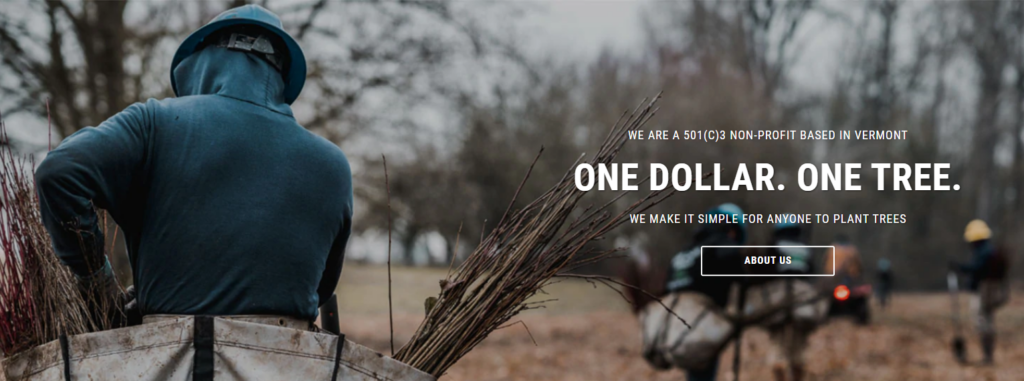Chances are, you’ve probably never thought about your website’s impact on the environment. Unlike our vehicle emissions, our home’s fuel supply, and our recycling habits, the internet’s carbon footprint is widely ignored in the media.
You might be surprised to hear your browsing habits even leave a carbon footprint! Just like driving to the store, loading a website or playing an online video uses energy thanks to data centres and network infrastructure.
Your carbon footprint might not be your first concern when you go to have a website built, but the truth is, every byte of data has an impact on our environment.
When I was doing a bit of background research for stats for this article, I stumbled on an eye-watering fact for the music video for Despacito (remember that song??). Despacito YouTube views burned as much energy as 40,000 US homes use in a year. That’s a lot of energy burned for a summer one-hit wonder.
The internet takes a massive amount of energy to power. The data centers that serve everything you see online account for around 2% of the world’s carbon emissions.
In 2022, the internet burns as much energy as the global airline industry!
What’s worse is that number is expected to explode from 2% to 14% by 2040.
As I’ve become more conscious of my own company’s impact on the environment, I’ve been compelled to put a focus on being deliberate about the types of websites I build, and how I build them.
In this article I’m going to share with you some of the practices I’ve put in place to make the websites I build as green as possible.
Strategic planning
You might go straight to the technical aspects of saving power — and while that does have a big impact (more on that later), there are a lot of factors that play a role before we even write a single line of code.
Planning, strategy, SEO, and content writing are all important parts of building greener websites.
Here are a few ways I’ve implemented eco-friendly website strategy to conserve energy:
- Mapping user journeys. By mapping out the different types of people that will visit your website, and what information is important to them, we can reduce the number of pages they need to load to accomplish what they need to on your website. The fewer pages loaded by each site visitor, the less energy your website burns in its mission to attract new customers.
- Search engine optimization. Search engine optimization and energy efficiency go hand-in-hand. By properly optimizing your website for search, users can land on the exact page they need rather than clicking around aimlessly on your website.
- Improving relevancy. Reading online isn’t like reading a book — internet users want to quickly browse information and be given only what’s relevant. By making your website highly-relevant to your users, we can reduce the amount of content we need to produce in order to satisfy your visitor’s goals.
- Providing clear calls to action. Giving your visitors a clear call to action helps them take the next steps sooner, and reduces the amount of time they spend browsing through content trying to figure out what steps they need to take next.
What’s interesting about all of the strategy and planning that goes into make a more eco-friendly website, is that all of it makes for a more user-friendly website as well.
Optimizing your website for search engines, anticipating their needs, serving relevant information, and giving clear calls to action improves visitors’ interactions with your website, gives a better overall user experience, and ultimately boosts your sales & conversions.
Minimizing the size of your website
Every element that makes up your website, including its HTML, CSS, & Javascript code, images, videos, and text, can be measured by its file size.
When a user visits your website, all that data has to be transferred from your server to the user’s computer.
The smaller your website, the less energy it takes to transfer all that data.
Here are a few of the ways I reduce the overall size of the websites I build:
- Use a lightweight framework. Although WordPress has thousands of themes to choose from, I exclusively use GeneratePress. At just under 1MB, GeneratePress is 4 or 5 times smaller than other popular themes like Astra.
- Image compression. Images typically account for the highest payload on any website. By using a combination of manual and automatic compression methods, I’m able to consistently reduce image sizes by 60% or more.
- Website caching & CDN. Serving as an intermediary, caching and content delivery networks help reduce the amount of data that has to go all the way from your website’s server to the user’s computer.
- Reduce 3rd party requests. Besides their own server, most websites load data from third parties too. I do my best to host everything locally (including fonts) to minimize the number of requests needed to load a page.
- Lazy loading. Typically, when you load a web page, your browser loads the entire page’s content even when it’s out of view. I use lazy loading which delays loading anything until it enters the viewport. This is especially useful for images and videos that won’t load unnecessarily.

These practices are what have helped me get my website’s home page to 816KB in size with 39 total requests. To put that into perspective, my closest local competitor’s home page is 8,200KB with 178 requests (over 900% increase in page size and 356% more requests!).
Ongoing maintenance and support
The internet is constantly evolving, and code and best-practices evolve alongside it. What’s considered efficient today will be surpassed quickly by technology that’s just around the corner.
To ensure that the websites I build keep up with the pace of technology, I offer website management services to keep websites thriving.
Here are a few ways this reduces your website’s burden over time:
- Optimized hosting. I utilize server-side caching and content delivery networks to reduce the overall usage of my servers. These methods drastically reduce the overhead on servers that are constantly pulling electricity just to stay cool.
- Software updates. By keeping the software that powers your website up to date, I can ensure that you’re using the latest technology to reduce energy consumption and serve your website as efficiently as possible.
- Security. Bots by the hundreds of thousands are constantly crawling the internet looking for vulnerabilities. My security stack helps block bot traffic from ever hitting your server. In some cases this can reduce your server’s workload by more than 50%!
- Expertise on standby. When it comes time to update your website, you might not know what kinds of implications installing plugins or adding content might have. My website management services include some of my time each month to ensure that your website continues to run efficiently over time.
Websites that go uncared for can quickly become a huge drain on resources. By taking the proper precautions, you can drastically reduce your website’s carbon footprint over its lifespan.
Giving back 300% of what I take
Though I am taking as many steps as I can to minimize the impact the websites I create have on our environment (and continue to improve these practices on an ongoing basis) — every website consumes energy.
That’s why I’ve partnered with One Tree Planted (a 501 charity with a mission to help global reforestation efforts) to help offset the carbon footprint of every website I’m responsible for.

Using the Website Carbon Calculator, I’m able to estimate the number of trees it takes to absorb the carbon created by every website I manage. Upon launch (and every year thereafter) I plant 3 times the number of trees needed to offset carbon emissions (a practice I started in 2022, and have pledged retroactively since the inception of my business in 2017).
I realize this doesn’t solve our pollution problem, but by partnering with One Tree Planted, I can do my best to ensure that I’m not making the problem worse.
Wrapping up
One of the best discoveries I’ve made in my journey to reduce my business’ carbon footprint is that all these efforts are not only better for the environment — they make for better websites.
By carefully planning, we can reduce the number of pages a visitor needs to load, which not only reduces energy consumption but makes for better user experience.
By minimizing the size of my clients’ websites, not only does it take less energy to transfer them to visitors, but they load quicker.
And by continuing to optimize websites, I’m able to continually reduce their environmental impact over time while simultaneously extending their lifespan (and giving my customers a better return on investment).
My efforts are by no means a solution for the internet’s impact on our planet — but if every web developer took these steps, we’d be headed in the right direction!
If you’re looking for ways to reduce your energy consumption online, here are a few simple steps you can take:
- Reduce your screen brightness.
- Close browser tabs and programs you’re not using.
- Bookmark frequently visited websites instead of searching for them on Google.
- Turn your computer and monitors off when you wrap up for the day.
Want to start reducing your company’s impact on the environment? See how your website currently performs or schedule a quick chat and let’s see how we can improve your site’s impact.




